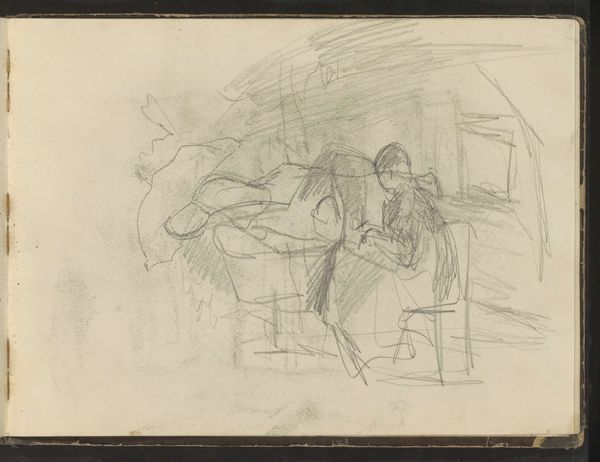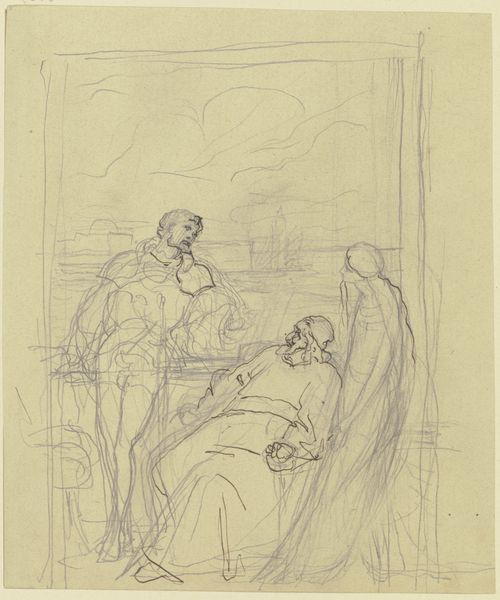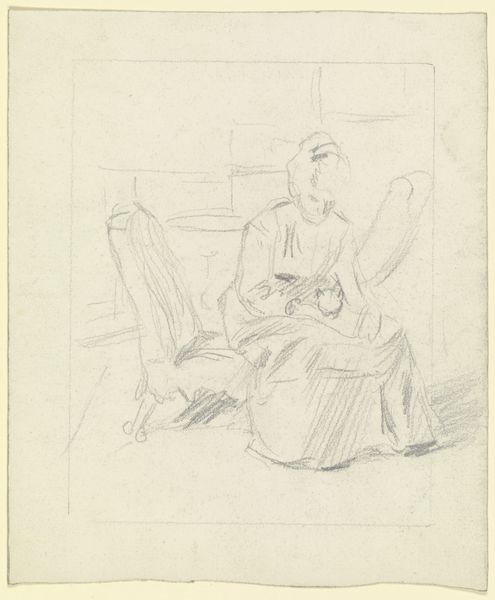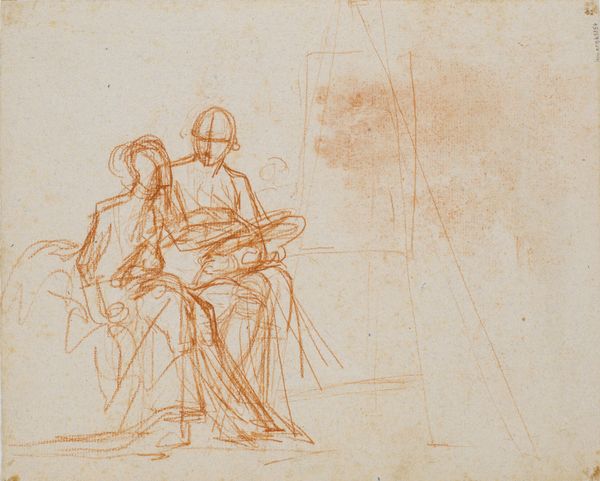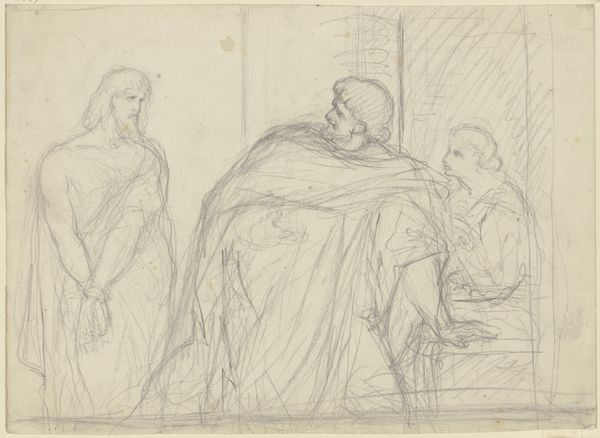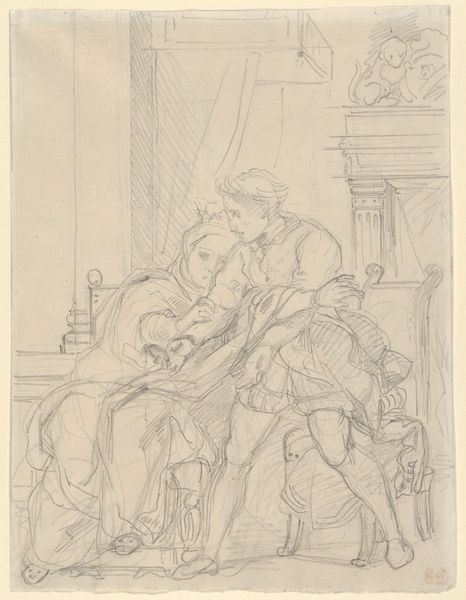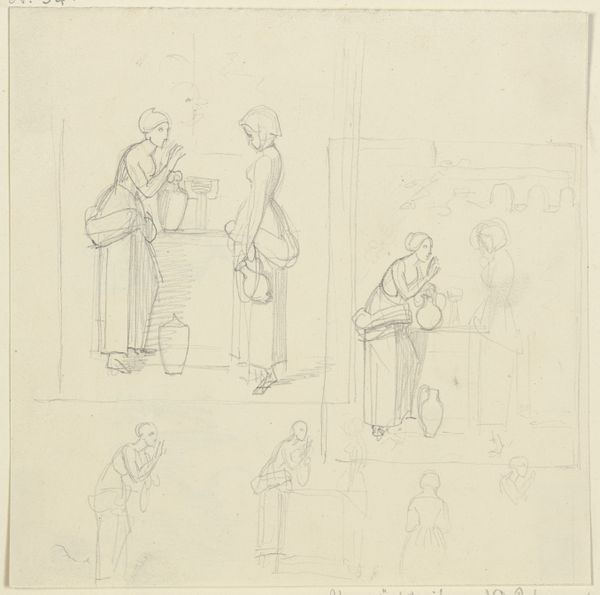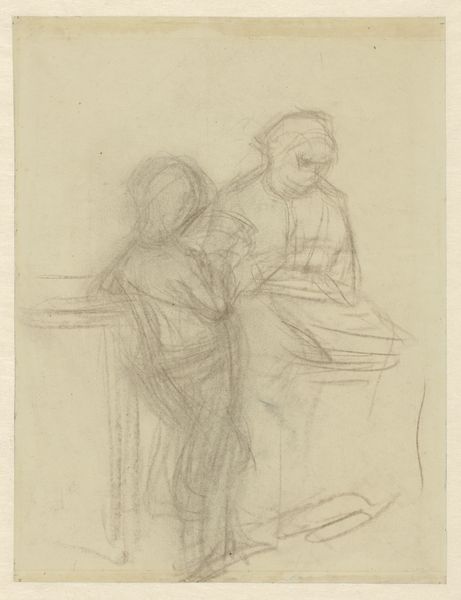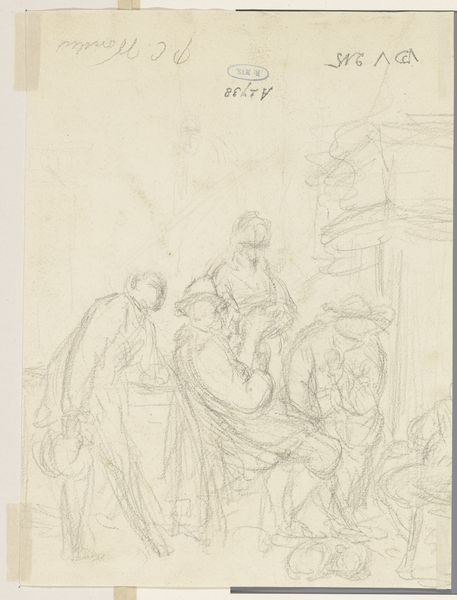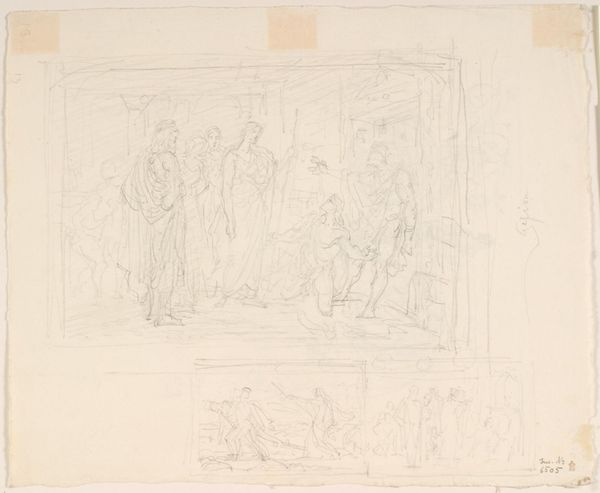
"Gotisk" scene med gående mand og lille pige 1927 - 1929
0:00
0:00
drawing, pencil
#
drawing
#
amateur sketch
#
quirky sketch
#
incomplete sketchy
#
landscape
#
figuration
#
personal sketchbook
#
idea generation sketch
#
sketchwork
#
detailed observational sketch
#
pencil
#
sketchbook drawing
#
genre-painting
#
storyboard and sketchbook work
#
initial sketch
Dimensions: 176 mm (height) x 187 mm (width) (bladmaal)
Curator: Welcome. Before us we have a sketch from the late 1920s by Martinus Rørbye. Its title is "\"Gotisk\" scene med gående mand og lille pige," currently residing here at the SMK. Editor: My first impression is of fragility. The thin, tentative pencil lines create a sense of transience, like a memory fading. What exactly am I looking at? Curator: Indeed. Notice the deliberate use of line, weight and density, a fascinating composition even in its unfinished state. Rørbye clearly outlines the adult figure as strong verticals, but contrasts them with curved lines that give the impression of protective gesture towards the child. Semiotically, what would you say Rørbye communicates in these differences of line? Editor: It reminds me of the archetypal image of father and child—almost a Saint Christopher figure. There's an implied narrative, something perhaps about guidance, or the protection of innocence within a Gothic, spiritual setting? But even the Gothic frame seems softened, rendered in these gentle strokes, hinting at human connection overriding architectural monumentality. Curator: A reading not at all dissimilar from my own interpretation of Rørbye’s intentions. It feels a preparatory study, lacking clear articulation within defined shape—except in relation to those figures, their relationship clearly takes dominance in terms of weight of tone within this rendering. How else does the semiotic code communicate? Editor: Perhaps it also suggests the passage of time and the cyclical nature of life? The older figure supporting the younger, which is further emphasized within its placement in a pre-set architectural form—which by extension may also denote faith, the eternal. These symbolic themes feel archetypal; very human in their familiarity across cultures and eras. The cultural weight attached to those archetypes adds layers of meaning to this seemingly simple sketch. Curator: And the perspective of Rørbye? Its architectural placement within that very ‘stage’ which denotes that this intimate rendering sits at a specific ‘place’ as a study? I am unsure; and further consideration needs addressing here… Editor: These rapidly sketched sketches offer valuable insights into how symbols retain resonance through art, psychology, faith, cultural interpretation – all in something dashed down in barely two pencil strokes. It opens conversations even now. Curator: Yes, indeed. Thank you, that gives me new areas to study here.
Comments
No comments
Be the first to comment and join the conversation on the ultimate creative platform.
